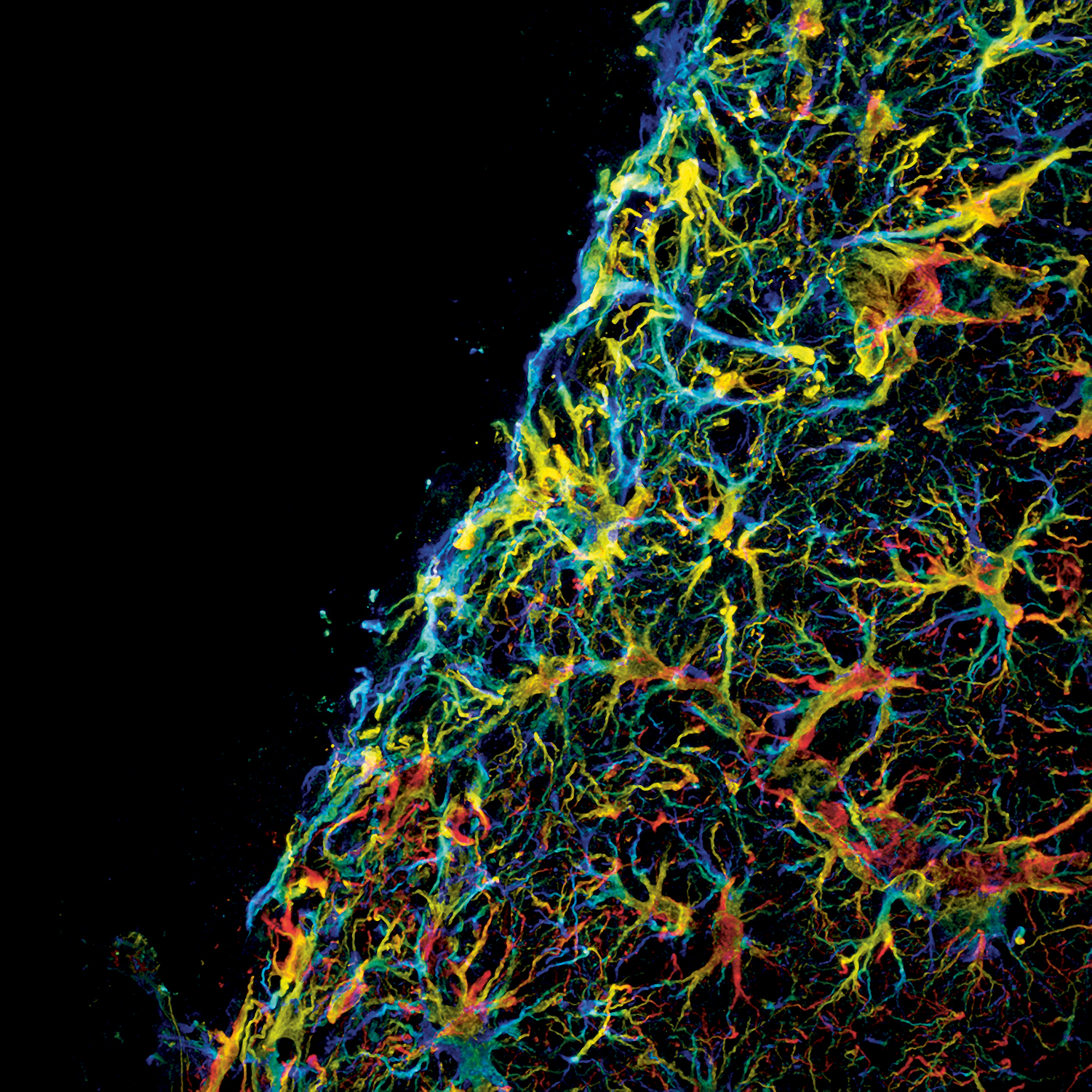To help ameliorate scarring and aid functional recovery of the brain after injury, researcher Francesca Maclean working with Dr David Nisbet at the Australian National University (ANU) is exploring biomaterials that could influence the behaviour of astrocytes. If successful these materials could eventually lead to implantable new treatments for patients with brain injuries.
Ms Maclean investigated biocompatible polycaprolactone nanofibres and peptide nanofibre hydrogels as materials that could be used as 3D cell culture scaffolds to mimic brain structure. These would enable studies of nerve cell behaviour, and development of treatments for brain injury and disease.
Sugars have been shown to alter astrocyte shape. The researchers therefore coated their nanofibres with different sugars to try and induce anti-inflammatory changes in the cells. They used scanning and transmission electron microscopy at Microscopy Australia’s ANU facility to visualise this process. The coated nanofibrous biomaterials were then investigated for their ability to influence astrocyte structure and behaviour.

Confocal image of astrocytes interacting with the hydrogel.
Confocal microscopy revealed that the peptide nanofibres reduced astrocyte-induced scarring in the brains of injured mice seven days after traumatic injury. By 22 days post-injury, astrocytes had penetrated into the hydrogel and were interacting with the peptide molecules. This behaviour had never been reported before. The multiple imaging techniques have been crucial in understanding how astrocytes may be manipulated to treat brain injury.
August 24, 2017